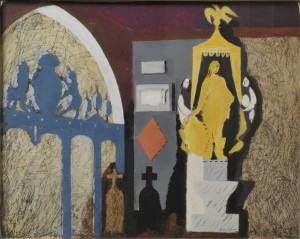Hat and hair pins (5), late 19th and early 20th Century

Hidden Content, Images, Videos and Documents
These pins, an enamel flower hair pin and several hatpins, belonged to Mary Howard, 5th Viscountess Bolingbroke and were preserved by her son, Vernon 6th Viscount Bolingbroke. They form part of a larger collection of modest jewellery owned by her ladyship.
Hat pins were first used in the early 1400's to secure ladies veils and wimples and enjoyed a revival in popularity beginning in the 1880's when bonnets started to be replaced by elaborate hats. Hatpins literally pinned hats onto the wearers hair and were often used in pairs. They became a standard women's accessory and were produced in a vast range of materials and types.
Sometimes hatpins, which could be up to eight inches long, were used by women to defend themselves against assault. In America there was concern that Suffragettes might employ them as weapons and laws were passed in 1908 to restrict their length. It is perhaps worth noting that Lady Bolingbroke was not known to be supportive of the Suffragette movement!
In the1920's the demand for hatpins fell away. Hair styles became short and hats smaller. However it is likely that women of Lady Bolingbroke's age may have continued to use them for a little longer.
- Year:
- 1880-1920
- Type:
- Costume
- Location:
- Lydiard House
- Owner:
- Swindon Borough Council
- Copyright:
- Friends of Lydiard Park
- Credit:
- Pete Melsom
- Last updated on:
- Monday 6th February 2023




